Have you invested in high-quality ophthalmic equipment? If so, you’re already ahead of the game in providing top-notch eye care services. But the journey doesn’t stop there. To keep your instruments operating effortlessly, proper care and maintenance are key. Remember, performing regular upkeep not only extends the lifespan of your equipment but also ensures accurate results.
In this comprehensive guide, we’re going to share some essential tips and practices to help you maximize the longevity of your equipment. Whether you’re a newbie or an experienced practitioner, the information you’ll find here is invaluable. Let’s take a dive into the details.
“Performing regular upkeep not only extends the lifespan of your equipment but also ensures accurate results.”
Just as a healthy diet and exercise can keep a human body running optimally for years, regular maintenance is the secret sauce to ensuring a long and productive life for your ophthalmic equipment. The precise, delicate nature of these machines calls for meticulous attention and care; this is where preventative maintenance comes into play.
“Preventative maintenance is the high-octane fuel that keeps your ophthalmic equipment purring like a well-tuned engine.”
This not only includes routine tasks like dusting off the exterior and checking the lights but also entails more sporadic duties, such as recalibrations and the occasional repairs. Ensuring cleanliness and accurate operation can significantly reduce the time and resources spent on replacements and repairs, thus saving on overall costs.
Creating a comprehensive maintenance schedule—tailored to each piece of your ophthalmic toolset—is a wise strategy. Having such a plan opens the path for more efficient management of your equipment. By checking warranty and maintenance information, you can design your schedule to coincide with recommended service routines.
“Maintenance schedules are like nutrition plans for your equipment, catering to its individual needs.”
We can’t emphasize enough the significance of keeping accurate maintenance and repair records. They serve as a mirror, reflecting recurring issues that could be triggering system failures or accuracy problems. These records also enable more effective communication with equipment vendors when explaining issues or ordering replacements.
| Record Category | Purpose |
|---|---|
| Equipment History | Tracks the history of equipment usage, maintenance, and repairs to predict future issues and maintenance needs |
| Common Issues and Solutions | Lists regularly occurring issues and their solutions for quick troubleshooting and reduced downtime |
| Spare Parts Inventory | Tracks the availability of crucial spare parts for prompt repairs and replacements |
| Warranty Information | Lists warranty terms and conditions to effectively manage repairs and replacements |
| Staff Involved | Highlights staff members usually handling the equipment for accountability and training purposes |
A clean working environment directly influences the longevity of your ophthalmic equipment. Keeping your space tidy will prevent dust and other debris from interfering with the machines’ moving parts, critical for maintaining their optimal functionality.
Ensuring the availability of spare parts is another critical aspect. Much like a first-aid kit during emergencies, having the right replacement part when needed is vital for keeping your practice up and running without interruptions.
Keep in mind the dos and don’ts of cleaning, maintenance, and assembly. Avoid any practices that could harm the machine or negatively affect its performance. Correct handling is a non-negotiable factor in guaranteeing the longevity of your precious instruments.
“Your equipment cares for your patient’s vision; it’s your job to care for your equipment.”
The vitality of your ophthalmic equipment boils down to how well you take initiative in preserving its useful life. These instrumental devices make a significant contribution to providing high-quality eye care to your patients. Hence, implementing effective strategies to ensure their longevity is a must. Before we delve into those methods, let’s take a glance at this table that breaks down the estimated lifespan of the common ophthalmic equipment.
| Ophthalmic Equipment | Estimated Lifespan |
|---|---|
| Slit Lamp | 10-15 years |
| Phoropter | 20-25 years |
| Ophthalmoscope | 7-10 years |
| Surgical Microscope | 10-15 years |
| Autorefractor | 7-10 years |
Remember, these are just averages. With the right care, preventive maintenance, and smart habits, you have the power to extend these lifetimes. In the coming sections, we’ll explore valuable practices that you can adopt to protect and extend the lifespan of your ophthalmic equipment.
First off, managing your ophthalmic tools with utmost care forms the foundation of prolonging its life. Think of it as a beloved possession that needs your attention and care. As minor as they might seem, simple actions like properly picking up and placing your equipment can significantly impact its longevity. It’s all about nurturing precision and respect for the tool’s intricacy and value. After all, they are your means of providing quality healthcare.
Each piece of ophthalmic equipment, be it a direct ophthalmoscope, slit lamp, operating microscope, or phaco machine, requires specialized care. This ranges from consistent cleaning, exclusive handling, to preventive maintenance. For instance, phoropters call for frequent cleaning and washing of the semipermanent face shields, as well as meticulous lens cleaning. Moreover, it’s recommended to send them off for professional preventive maintenance every two years. Becoming aware of such specific needs of each tool in your apparatus is a big stride towards maximizing their lifespan.
Well, we did mention earlier that it’s the ‘right care’ that will help you in the journey of equipment longevity. To ensure this, consider partaking in training sessions or workshops that cover the intricacies of handling and maintaining ophthalmic equipment. For instance, guides like the “appropriate technology in ophthalmology” manual and training videos on the subject can be extremely useful resources to learn from.
In the run of preserving your equipment, also remember that sometimes, replacing or upgrading is the most viable option. After years of operating, it’s possible that your machine is no longer as efficient, or newer technology can offer superior service. Remember, the primary goal is to provide top-notch patient care, and upgrading can often help achieve this more effectively.
| Factors | Upgrade | Repair |
|---|---|---|
| Cost | Can be high but considered an investment | Depends on the extent of damage |
| Efficiency | Improved operational efficiency | May not achieve efficiency of a new machine |
| Technology | Access to latest advancements | No upgrade in technology |
| Patient care | Potentially increased quality of care | May not improve the quality of care |
Another critical aspect you cannot ignore when maximizing the longevity of your ophthalmic equipment is the availability of spare parts. All too often, unexpected machinery downtime happens, leading to disrupted services and lost revenue. Keeping critical spare parts on hand can save both time and money by quickly restoring your equipment’s functionality. It’s important not only to have them but also to understand their proper storage to maintain their condition. Your spare parts supply could make a world of difference in your operational continuity.
Keeping your working environment pristine is just as essential. Ophthalmic equipment operates optimally in clean and well-maintained conditions. Regular cleaning and sterilization, particularly of your instruments, can make a significant difference in their lifespan. Remember that dust, debris, and other particulates can harm delicate components and affect performance. Ensuring your workspace remains dust-free will contribute greatly to equipment longevity.
Let’s talk resale. As a smart equipment owner, you might want to consider the resale value of your machinery. Regular maintenance and keeping your machines in top-notch condition will significantly amplify their resale value. More so, it will ensure you get a significant return on investment when you decide to upgrade your equipment.
Your meticulousness to maintenance and repair should be mirrored in your record-keeping. Documentation of these processes can provide invaluable insights into recurring problems and point out areas of improvement. These records could also strengthen your relationships with your vendors, allowing for more streamlined communication and effective feedback. So, remember, “An investment in knowledge always pays the best interest.”
You’ve invested in state-of-the-art ophthalmic equipment for your practice—a move that’s sure to boost your standard of care. Now, the next order of business is to ensure that this equipment lasts as long as possible. After all, ophthalmic devices represent a sizable investment, and it’s only prudent to maximize their shelf life.
One overlooked method of ensuring equipment longevity is maintaining a healthy partnership with your equipment vendors. They have the inside scoop on what it takes to keep their products performing optimally. Setting a solid relationship and communication line with your vendors can pave the way for more effortless access to technical support and faster turnaround times for parts replacements or additional purchases.
“Your ophthalmic equipment vendors can be a vital ally in maintaining the long-term performance and durability of your investment.”
Correct storage of your ophthalmic equipment is a key step in safeguarding it from potential damage. This often overlooked step can have a significant impact on equipment lifespan. Poor storage conditions can lead to unnecessary Wear-and-tear, deterioration, or even breakage. Let’s go over the main components of proper ophthalmic equipment storage:
As part of your proactive strategy to ensure the longevity of your ophthalmic equipment, investing in quality sterilization methods should be given priority. Effective sterilization not only prolongs the useful life of your instruments but is critical in infection control and prevention.
One approach that’s commonly used in the ophthalmic field is steam sterilization via an autoclave. This technique uses steam under pressure to eradicate microorganisms via protein coagulation, helping to maintain sterility and patient safety in your clinic. However, remember to always proceed with caution for heat-sensitive materials.
Another approach is through chemical sterilization, which makes use of liquid or gas to destroy harmful organisms. This can be a suitable option for equipment that does not respond well to heat.
Regardless of the method you choose, remember that it’s essential to follow the manufacturer’s instructions for the sterilization and care of each specific piece of equipment. Not doing so could lead you to compromise not just your equipment’s condition but also the safety of your patients.
Replacing or upgrading your equipment might seem contradictory to a guide about increasing its longevity. However, keeping obsolete or severely worn equipment isn’t beneficial to your practice in the long run. Extending the life of your equipment is not about holding on to them indefinitely but about recognizing when it’s time for a change.
Doing regular checks on all your equipment, from the slit lamp to the phaco machine, allows you to see which ones might need replacements or even just minor repairs. Remember, sometimes replacing a smaller part of a larger piece of equipment can be more cost-efficient and contribute to your device’s long-term longevity.
| Ophthalmic Equipment | Typical Lifespan | Common Maintenance Needs | Possible Replacement Parts |
|---|---|---|---|
| Slit Lamp | 10-15 Years | Bulb replacement, cleaning of joystick pad and mirrors | Bulbs, Joystick pad |
| Phaco Machine | 5-10 Years | Regular calibration, tube replacement | Tubes, Control Panel |
| Operating Microscope | 15-20 Years | Precision alignment, cleaning of lenses | Lenses, Light Source |
| Direct Ophthalmoscope | 7-12 Years | Bulb replacement, cleaning of lens | Bulbs, Lens |
| Phoropters | 10-15 Years | Semipermanent face shield cleaning, lens cleaning | Lenses, Face Shields |
One of the effective strategies that many practitioners tend to overlook is the potential resale value of their existing equipment. When you’re upgrading your office’s ophthalmic arsenal, you may uncover opportunities to sell off your older, yet functional, machinery. This could provide you with additional revenue to offset new purchases and maximize your overall return on investment.
How do you determine resale value, you might wonder? It lies firmly anchored in mindful care and maintenance of your ophthalmic equipment. Regular maintenance not only prevents costly breakdowns but also ensures the units remain in sellable condition. Furthermore, accurate documentation of each piece’s maintenance history is a prime indicator of its value in the resale market. Potential buyers prefer proof of proper handling and servicing – it’s a seal of confidence and reliability.
| Equipment Type | Maintenance Actions | Frequency | Resale Value Impact |
|---|---|---|---|
| Direct Ophthalmoscope | Cleaning, lens adjustment | Bimonthly | Medium |
| Slit Lamp | Alignment, cleaning of optics | Quarterly | High |
| Phaco Machine | Replacing consumables, cleaning | After each use | Very High |
| Operating Microscope | Cleaning of optical surfaces, realignment | Annually | High |
And let’s not forget the role of spare parts. Over time, certain components might require replacement. Suppliers often discontinue parts for older models, therefore preserving and having a handy stockpile of necessary spare parts can leverage your negotiation power in the reseller market. It’s like garnering little nuggets of gold; silencing the sceptics with your forethought and prudence.
To wrap this up, never underestimate the power of the resale market as part of your strategy to maximize the longevity and return on your ophthalmic equipment investments. Remember, it’s not just about simply purchasing the right equipment, but also about putting in the required effort to keep it in a saleable condition. It’s a long-term commitment and a precise dance in ensuring ongoing functionality and attractiveness for any potential future reseller market.
Maximizing the efficiency of your ophthalmic equipment not only ensures its longevity but also translates into a more effective practice, higher patient satisfaction, and ultimately, a more profitable business. Armed with this perspective, here are crucial strategies to optimize the efficiency of your ophthalmic arsenal.
First and foremost, understanding your equipment’s particular needs will take you a long way. Specificity is key, whether you’re dealing with a direct ophthalmoscope, a slit lamp, or a phaco machine. Each piece has unique maintenance needs. An effective strategy is to invest in detailed user manuals or even training videos which are often available in various formats such as DVD or VHS. Such resources, when used regularly, serve as effective guides to safeguarding the functionality of your equipment.
Remember the saying ‘A stitch in time saves nine’? It’s especially relevant to healthcare equipment like phoropters. Rather than facing downtime due to unforeseen breakdowns, preventive measures such as regular cleaning of semipermanent face shields, keeping lenses clean, and sending the phoropter for preventive maintenance and lens cleaning every two years, can save you time and money in the long run.
The third tip revolves around giving due attention to all operations that involve your equipment. The proper handling and processing of ophthalmic instruments are fundamental not just for the equipment’s longevity, but also for infection control and prevention, and the safety of your patients. Any slip can potentially lead to healthcare-acquired infections, thereby decreasing the efficiency of your practice.
The “right time” to upgrade your ophthalmic equipment is subjective and is determined by numerous factors, like the age of your current equipment, its performance, the cost of frequent maintenance, the productivity of your practice, and your budget. Regularly evaluate your equipment’s overall value keeping these factors in mind.
Consider factors like your budget, the overall performance and maintenance needs of your current equipment, how the upgrade can enhance your practice’s productivity, and potential patient benefit. You should also factor in resale value of your old equipment and the availability of spare parts for the new one.
Equipment upgrades can significantly improve your practice’s efficiency. Newer models often have advanced features aimed at increasing accuracy, speed and convenience of procedures. They may also often require less frequent or less expensive maintenance, ultimately saving you time and money in the long-term.
The frequency of preventative maintenance can differ depending on the specific piece of equipment. Some may need regular weekly cleaning, while others may need professional maintenance every 2 years, like phoropters. Follow your manufacturer’s guideline and establish routine checks to maximise your equipment’s lifespan.
Yes, many manufacturers offer training sessions and resources on handling and maintaining their equipment. Additionally, informative videos, guides, and mixed media resources are available online. Organizations may also run workshops to help health practitioners like yourself care for their equipment effectively.
Maintaining your ophthalmic equipment isn’t just a necessity—it’s an investment in the longevity of your practice. By following these strategic steps, you will be prolonging the lifespan of your equipment, optimizing its performance, and enhancing the efficacy of your services. Embrace these best practices today, and the payoff will be substantial tomorrow.
But remember, you don’t have to navigate this journey alone. At ikitc.com, you’ll find a treasure trove of resources to help you manage your ophthalmic equipment effectively. From insightful articles to comprehensive guides and video tutorials, we’ve made it our mission to help you take the best care of your ophthalmic tools. Visit us today, and let’s gear up for a future of peak performance and prolonged equipment lifespans together!
VISIT OUR SHOP
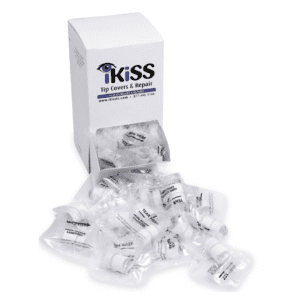
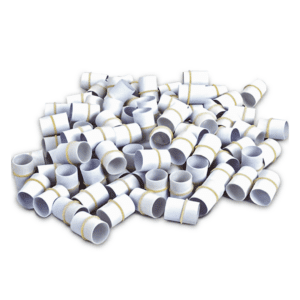
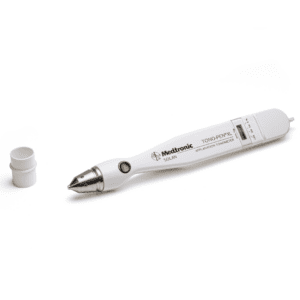
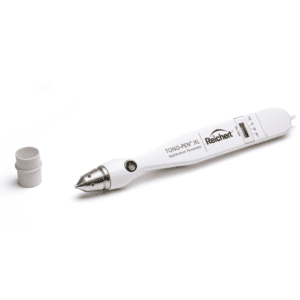
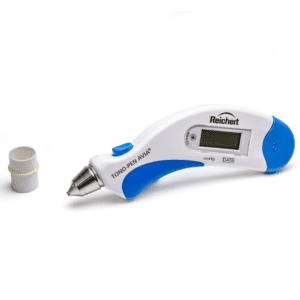
iKiSS is the go-to provider for top-quality refurbished Tono-Pen® Tonometers, Tono-Pen AVIA® Tonometers, Slit Lamps, and Phoropters, offering substantial savings of up to 40%.